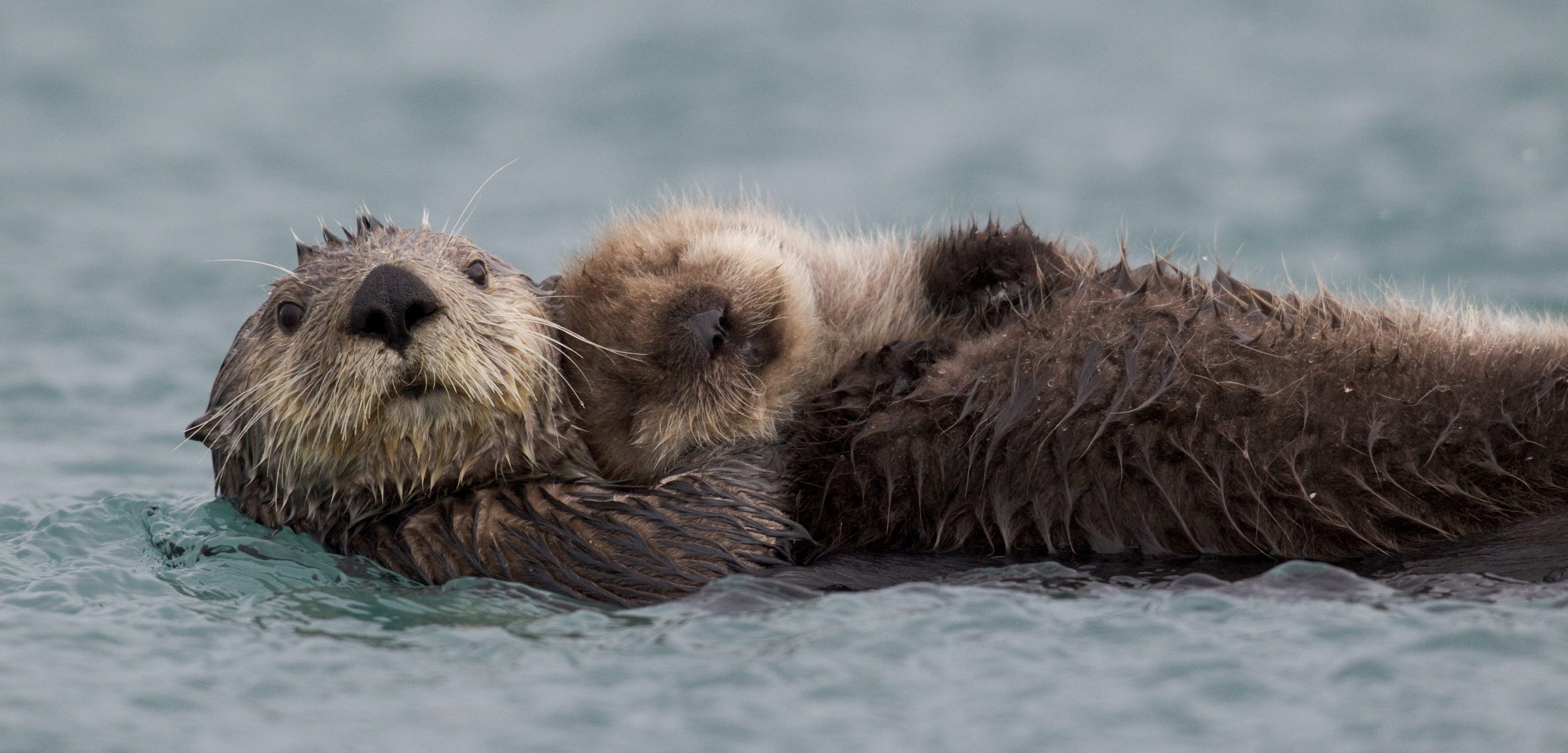What’s Killing Alaska’s Sea Otters?
A mystery disease is stranding sea otters in Alaska’s Kachemak Bay region.
Article body copy
So far this year, at least 250 sick or dead sea otters have washed ashore on Alaska’s southern coast, and no one knows why.
This is more than double the number reported last year—itself higher than the average— says Joel Garlich-Miller, a biologist with the US Fish and Wildlife Service. Though the toll may be an undercount: tides, currents, and scavengers can keep a carcass from ever reaching shore, or snatch it away once it gets there.
The cause, or perhaps causes, behind the deaths is puzzling: the otters’ symptoms are suggestive of a number of diseases, so otter experts and veterinarians are unable to peg a single culprit.
Some of the otters that have washed ashore are clearly emaciated, suggesting a long illness. But a small cluster died suddenly at a healthy weight, which is “even more curious,” says veterinarian Carrie Goertz.
Otters that were stranded while still alive have tremors and paralyzed hind legs. They’re “almost wobbly,” says Marc Webber, a deputy manager of the Alaska Maritime National Wildlife Refuge who also volunteers to help stranded marine mammals.
“They’ll get up on their short front legs and teeter a little bit and settle back down, or almost tip over—like they have neurologic problems,” Webber says.
Kathy Burek is an independent veterinary pathologist, and for the past four months she’s been looking for clues in the carcasses of otters that wash ashore.
For Burek and others, the most likely culprit behind the sea otter deaths is the bacterium Streptococcus infantarius subspecies coli, a relative of the various Streptococcus bacteria that cause pneumonia, strep throat, and other diseases in humans. In otters, S. infantarius subsp. coli can cause encephalitis, which kills them quickly, or can infect the heart muscle leading to heart attacks and blood clots in their hind legs. In 2006, the bacterium was responsible for a mass die-off.
But although the swabs Burek sent for testing came back positive for the strep bacterium, she suspects that it isn’t the whole story; the bacterium is endemic to this population of otters, so there may be something else going on that’s making these infections more deadly.
“Any time you have a disease process occurring at an unusual rate, even if it’s a known disease process, you want to figure out what’s different, what’s causing it to increase so much,” Burek says. “So we have a bunch of different things we’re looking at.”
Much as pneumonia will often infect a person’s lungs after they’ve been weakened by another disease, some other ailment may be wearing the otters out and allowing the strep bacterium to take hold.
One option for this penultimate cause of death is paralytic shellfish poisoning. This past summer, an enormous algal bloom plagued North America’s west coast, filling the food web with toxic domoic acid. Domoic acid poisoning would explain the neurological symptoms. Yet only a few otters have tested positive for domoic acid poisoning—no more than the highest historical levels, Burek says.
But Erin Rechsteiner, a sea otter research associate at British Columbia’s Hakai Institute, cautions that domoic acid poisoning shouldn’t be ruled out too readily. Otters can excrete domoic acid in their urine, making it difficult to detect. (The Hakai Institute and Hakai Magazine are both funded by the Tula Foundation. The magazine is editorially independent of the institute and foundation.)
The water in Alaska’s Kachemak Bay region has also been warmer than usual this year because of the Blob, which could have created a cauldron of Vibrio parahaemolyticus, a bacterium that can cause food poisoning in people. But Burek thinks V. parahaemolyticus is more likely to cause gastroenteritis in the otters than to kill them.
Burek suspects that the real cause of the otters’ plight is a virus, something that has been weakening the otters’ immune systems and making them more susceptible to the strep bacterium. Even with this hunch, it could take weeks or months to figure out which virus is responsible.
Otters are sick and dying, but Burek doesn’t think this spike spells doom for Kachemak Bay’s sea otters.
Once decimated by the fur trade, the population of otters in Kachemak Bay exploded in the early 2000s, growing by 26 percent every year to reach around 5,900 otters by 2012. Some of this growth came from migration, some from reproduction. It could be that the otters’ relatively high population is helping the mystery disease to spread, says Burek.
“With the pathology of wildlife,” Burek says, “you’re not just trying to figure out what’s going on with the animals, but also what’s going on with the environment, what could be happening that could affect human health, [what] might be affecting other animal populations.”
“Once you know some of those answers about what it might possibly be, you can start going further with those questions,” she says.

